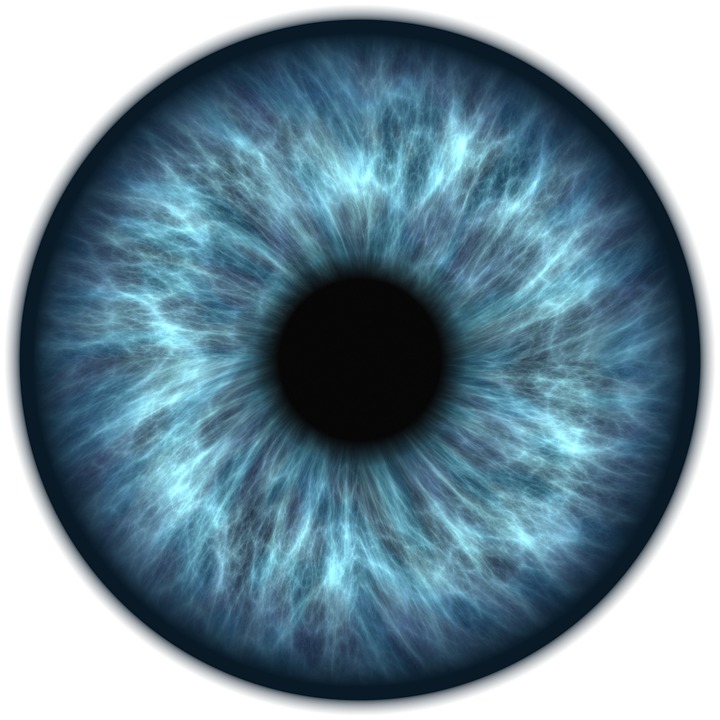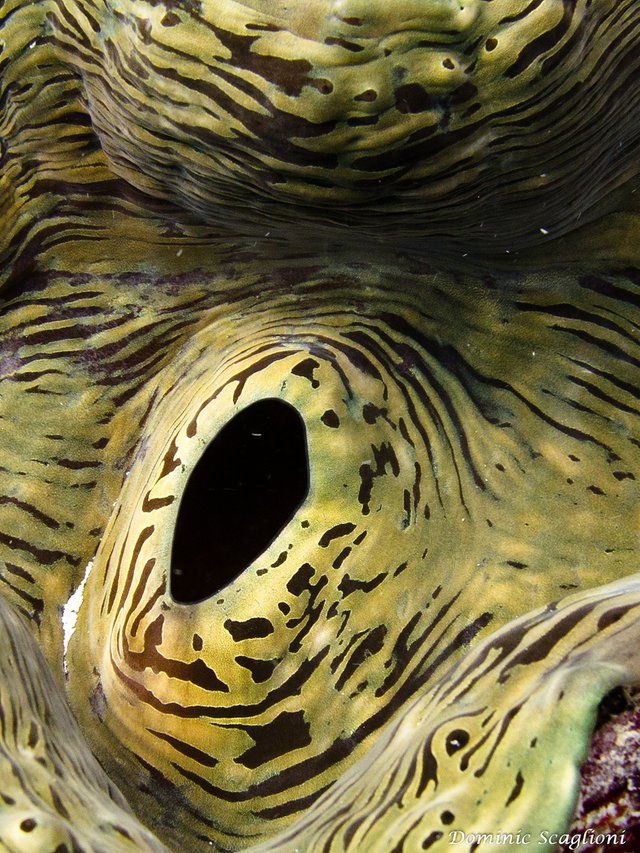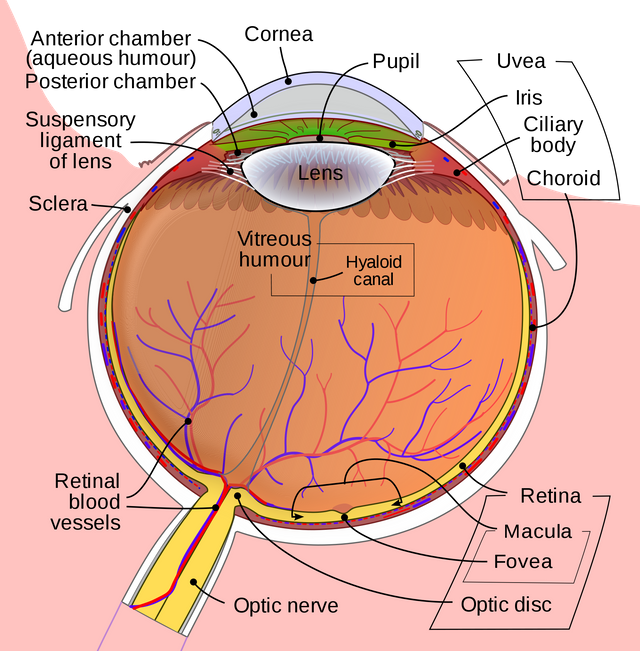Super Cool Science S#!t #9 - The Eye of the Beholder
The eye is one of the most complex organs that nature has ever created, and the first organs that can be considered eyes are thought to have originated around 600 million years ago, though this sight organ has evolved seven separate times. Everyone knows what eyes are, but many never stop to think about the incredible organ that allows them to see the world.

An assortment of optics
Eyes typically work by taking light into special sensor cells that convert the light energy into an electro-chemical signal that can be interpreted by the brain. There are 10 distinct types of eyes, split into two groups.
Simple eyes
These eyes are called simple because they contain only a single lens that focuses light only photosensitive cells. The term does not imply that these eyes are any less capable. In fact, humans have "simple" eyes.

Giant Clam eye Source
Ocelli or "Eye Spots" -
The most simple of sight organs, Ocelli are possessed by animals such as sea stars, some jellyfish, many snails and slugs, and even giant clams. They don't have features like a cornea or lens, and don't contain pigment in all their cells, which makes these eyes appear red or black in color. Some of the simplest Ocelli can only detect the difference between light and dark.Stemma or "Pit Eyes"-
This class of simple eye contains a biconvex lens that focuses light into a single cluster of photoreceptor cells. Many types of larvae have these stemma until they reach adulthood, when most will develop into "compound eyes". As their name implies, pit eyes are sometimes set into pits, which allows light to enter directly at only a specific angle.Spherical lenses -
These eyes have only a single refractive index, and movement can cause significant blurring of the vision. Because of this, most spherical lensed eyes have special muscles that help hold the eye still.Refractive corneas -
These are the eyes we know best. Most land animals, including many spiders and some insect larvae have non-spherical eyes. The vitreous fluid in these eyes have a higher refraction index than air, and thus will only work as well while above water, which has a refraction index about the same as inside the eye.Reflective eyes -
Lined on the inside with tiny "mirrors", these eyes focus light into a central point. If you were to peer into the pupil of these eyes, you would see reflected back at you exactly what the organism is seeing.Multiple lenses -
Some "simple" eyes do have multiple lenses, like those seen in eagles, jumping spiders, and some marine life. These are usually "stacked" to clarify or increase the optical resolution of the organisms surroundings.
Compound Eyes
These eyes have many, sometimes thousands, of individual photoreceptors, called ommatida, spread out over a convex surface. What the organism sees is a mesh of input from all the ommatidium. These eyes are able to detect very fast movement, and in some cases, can even see the polarization of light!
.jpg)
The common house fly has two large compound eyes, and three tiny ocelli. Source
Apposition Eyes -
These are the most common type of eye, being possessed by all arthropod groups, and a few other things like some worms and bivalves. The individual ommatidia create multiple inverted images that make up the organism's vision. They are thought to be an early ancestral form of compound eyes.Superposition Eyes -
The ommadidium in these compound eyes work together to form a single image. They are commonly found on nocturnal insects because they can create an image up to 1000x brighter than apposition eyes.
There is other types of compound eyes, like those found in male Strepsiptera and in Scutigera. Male Strepsiptera have many simple eyes that work together to form a unified image, and Scutigera have clusters of ommitadia on each side of their heads that work much like a compound eye.
The Human Eye
Our eyes are my favorite, by I'm a bit biased... We're able to see about 10 million colors, perceive depth, and have been shown to be able to detect a single photon! No matter your race or gender, the human eye is about 24 millimeters in diameter (though they are not perfect spheres), and that measurement only varies by about 1-2 millimeters. The human eye contains three distinct layers. The first is made up of the cornea and sclera, the middle contains the iris, choroid, pigmented epithelium, and ciliary body, and the inside layer being the retina. Filling the inside of the eye is a gelatinous fluid called the vitreous humour which is made up of water and proteins.
When light is captured by the cornea it passes through the pupil, then the lens, which projects it onto the rod and cone cells we have in our retinas. These rods and cones detect different wavelengths of light (colors), and send an image to the brain.
Some Super Cool Facts:
- The largest eye in the world is that of the giant squid, measuring up to a whopping 10 inches in diameter!
- The smallest "eyes" were recently discovered to belong to cyanobacteria, which can focus light to a single spot, letting them detect the direction of light, though actual sight as we know it is impossible with only a single cell.
- According to the Guiness Book of World Records, the Vampire Squid has the largest eye-to-body ratio. They only grow to about 11 inches, but their eyes can be about an inch in diameter.
- The Mantis Shrimp is alleged to have the most complex visual system of any animal, with hyperspectral vision.
Life would be much different if we were unable to detect the light that bounces off of everything around us. Eyes have evolved to provide a sense of direction in almost every conceivable environment this planet has to offer, and it would be interesting to learn if/how life on other planets (if that life exists) would have adapted to being sensitive to the fastest particles in the universe.
References:
- https://www.ncbi.nlm.nih.gov/pmc/articles/PMC3143066/
- https://en.m.wikipedia.org/wiki/Eye#
- https://www.nature.com/articles/ncomms12172
- http://www.annualreviews.org/doi/10.1146/annurev.ne.15.030192.000245
- http://www.telegraph.co.uk/news/science/science-news/12147643/Scientists-accidentally-discover-worlds-smallest-and-oldest-eyeball.html
If you enjoyed this post, consider upvoting and/or resteeming it. I try very hard to deliver quality, original content, and often my posts fly under the radar. I'm still a growing minnow, and I could use all the help I can get! Now that I've gotten that out of the way, you have yourself a wonderful day!
Ready to learn more? Checkout my recent post about
The Super Cool Science of Breastfeeding!


I loved the super cool facts.
Could you imagine holding the eye of a giant squid in your hand!
Supercool @thatsweenyguy. Thanks for an interesting read.
This certainly wasn't my best work. It was mostly done on my phone, but I'm still good with how it turned out. Thanks for stopping by!
Of course. I look forward to these posts.